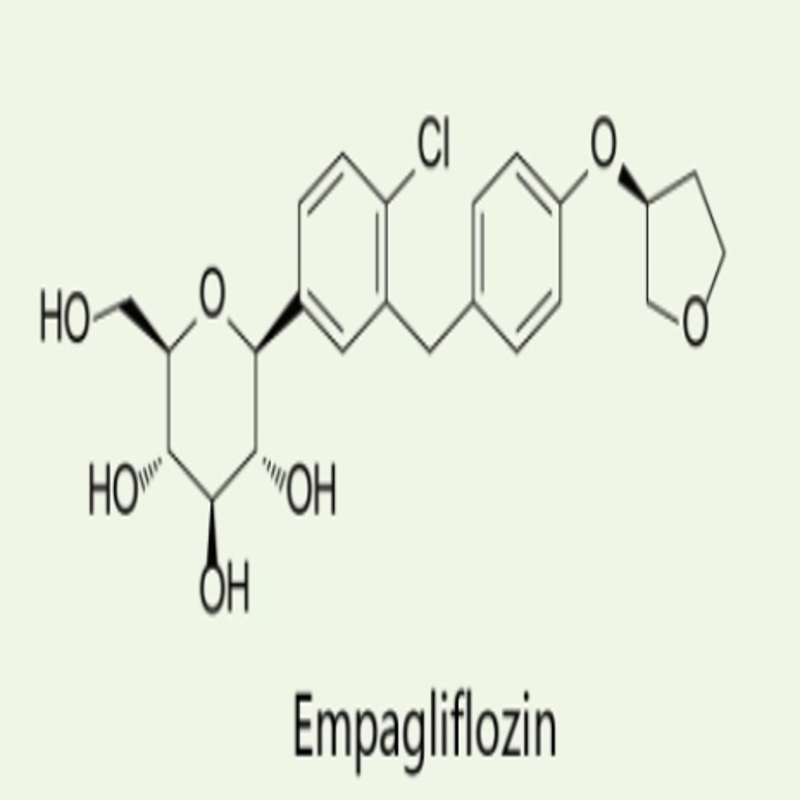-
Categories
-
Pharmaceutical Intermediates
-
Active Pharmaceutical Ingredients
-
Food Additives
- Industrial Coatings
- Agrochemicals
- Dyes and Pigments
- Surfactant
- Flavors and Fragrances
- Chemical Reagents
- Catalyst and Auxiliary
- Natural Products
- Inorganic Chemistry
-
Organic Chemistry
-
Biochemical Engineering
- Analytical Chemistry
- Cosmetic Ingredient
-
Pharmaceutical Intermediates
Promotion
ECHEMI Mall
Wholesale
Weekly Price
Exhibition
News
-
Trade Service
*For medical professionals only
The correct selection of hypoglycemic drugs can help diabetics easily control sugar
.
In the treatment of type 2 diabetes, more and more patients are facing problems such as the failure of oral hypoglycemic drugs, low compliance with frequent insulin injections, and hypoglycemia after the use of hypoglycemic drugs.
Let's start with a case and understand the therapeutic advantages
of deglupartdiinin when oral hypoglycemic drugs fail.
Case review
Basic situation: Female, 68 years old, admitted to the hospital
for "5 years of found blood sugar increase and poor blood sugar control for 1 month".
Current medical history: 5 years before admission, symptoms such as dry mouth and polydipsia, visited an external hospital, clearly diagnosed as "type 2 diabetes", began oral metformin 0.
5g three times a day (TID) hypoglycemic therapy, blood sugar control is acceptable; 4 years before admission, blood sugar increased, oral metformin 0.
5g TID and baitapine 50mg TID hypoglycemic therapy; One year before admission, blood glucose fluctuated greatly, and patients with oral metformin 0.
5g TID and glimepiride 4mg once daily (QD) still fluctuated greatly; In recent 1 month, symptoms such as night palpitations, discomfort and sweating often appear, which can be relieved after eating, and outpatient examination of fasting blood glucose (FPG) 1 0.
9 mmol/L, blood glucose (2h-PPG) 22.
1mmol/L 2 hours after meals, glycated hemoglobin (HbA).
1c): 9.
8%, admission for further diagnosis
and treatment.
Anamnesis: 5 years of history of coronary heart disease, implantation of a coronary stent; Suffered from pancreatitis 3 years ago; Recurrent episodes of vaginitis and urinary tract infections
.
Family history: family genetic history of diabetes, mother with diabetes
.
Relevant checks
Admission examination: blood pressure (BP): 130/80mmHg, body mass index (BMI): 26.
8 kg/m2; 24-hour urine microalbumin, liver and kidney function is normal, blood lipids: total cholesterol (CHO) 5.
72mmol/L, low-density lipoprotein (LDL) 3.
27mmol/L; ECG showing sinus rhythm V1-V5 ST-segment depression; Ultrasound of blood vessels of both lower extremities: arteriosclerosis of both lower extremities (maximum stenosis 40%); Echocardiography shows aortic sclerosis, decreased left ventricular diastolic function, consistent with ultrasound manifestations of coronary heart disease; Fundoscopy is generally normal
.
▌Oral glucose tolerance test
Note: Glucose (Glu), insulin (INS), c-peptide (C-P).
▌Admission diagnosis:
1.
2 diabetes mellitus combined with lipid metabolism disorders and lower limb arteriosclerosis obliterans
2.
Coronary heart disease
Unstable angina
After coronary stent implantation
Cardiac Function Level II (NYHA).
Development of blood glucose regimens
1.
Formulate individualized treatment plan based on patient characteristics
- History of coronary heart disease for 5 years, symptoms of angina, poor heart function
. - Insulin release tests show poor
β cell function. - Fasting and postprandial blood glucose were high, postprandial blood glucose levels were more prominent, and HbA1c levels were not up to standard
. - Recurrent hypoglycemia occurs
prior to admission. - Chronic complications
of diabetes. - previous pancreatitis and not candidates for glucagon-like peptide-1 (GLP-1) receptor agonists; Recurrent severe urogenital tract infections, sodium-glucose cotransporter-2 (SGLT-2) inhibitors
should not be used for the time being.
2.
Factors to be concerned about in the treatment of type 2 diabetes
- Glycemic control is up to standard
. - Reduces blood sugar fluctuations
. - Reduces the risk of hypoglycemia with little
effect on body weight. - The treatment plan is simple, has little impact on lifestyle, and can be followed
. - The patient's financial ability is acceptable
. - The patient's cultural level and self-management ability, etc
.
3.
Individualized blood glucose management goals
combined with patient laboratory tests, consider the treatment target of FPG 4.
4~7.
0mmol/L, non-fasting blood glucose < 10.
0mmol/L, and lipid<b20> adjustment.
4.
Hypoglycemic therapy
■ The first stage: first use the insulin pump to reduce blood sugar after
admission■ The second stage: stop the insulin pump treatment and change to the combination of deglu aspart double insulin combined with oral drug treatment
■ The third stage: Degu aspart double insulin combined with oral drug treatment, guide the patient to adjust the diet, the case is an elderly patient, the
PPG level is particularly prominent, and coronary heart disease, At the same time, the patient's tolerance and sensitivity to hypoglycemia are very low, so it is necessary to formulate a treatment plan
for the patient in combination with the above characteristics.
In addition, the patient's own β cell function is relatively poor, accompanied by a variety of complications, which limits the choice of drugs
.
How to choose a safe, effective, economical and convenient treatment plan for patients to meet the individual needs of patients has become the key
.
In this case, the patient finally used the two-time daily (BID) + oral drug regimen of deglutinin aspart, and the blood glucose was finally well controlled
.
At the same time, we also see the advantages
of insulin degu aspart in the treatment of this patient.
- Two-pronged, economical and convenient: Degu aspart is the world's first new generation of soluble double insulin, which is a soluble double insulin preparation composed of 70% insulin degludec and 30% insulin aspart, both components exist independently in the preparation and after injection, and synergistic hypoglycemic effect [1], which can cover both FPG and PPG
。 Results from a 38-week, international, open-label, randomized, treatment-compliant Step by Step trial showed that deglupartic double insulin was injected less frequently daily and achieved similar glycemic control compared with the basal + mealtime regimen (Figure 1) [2].
Fig.
1 Compared with the basal + mealtime regimen, the efficacy of degu aspart double insulin treatment is comparable and the number of daily injections is lower
- Stable hypoglycemic reduction after fasting meals: Studies have shown that Degu aspart can control both FPG and PPG, and can be injected once a day or twice a day with the main meal, without mixing before injection, and its basic components can cover 24-hour blood glucose control [3].
In patients with T2DM who had not previously been treated with insulin, the Start Twice Daily study showed that dextan aspart double insulin BID had better glycemic control before and after breakfast compared with insulin aspart 30 BID regimen, and that deglu aspart double insulin BID significantly reduced confirmatory hypoglycemia and nocturnal hypoglycemic events (Figure 2) [4].
。
Fig.
2 The risk of confirmed hypoglycemia and nocturnal confirmed hypoglycemia of degupartin-aspart decreased by 54% and 75%, respectively:
as the course of T2DM patients progresses, patients will have poor or even ineffective treatment with a variety of oral drugs, and patients should start insulin therapy
in time.
For diabetics with coronary heart disease, whether insulin can smoothly reduce blood sugar is particularly important, and Degu aspart double insulin can effectively solve this problem
.
In addition, frequent daily insulin injections can lead to reduced patient compliance, which can affect blood sugar control
.
In addition, Degu Despart insulin can effectively improve patient compliance with its effectiveness and safety, so that the patient's blood sugar can be effectively and safely controlled, bringing long-term benefits
to patients.
References:
[1] Havelund,et al.
Pharm Res.
2015; 32:2250-8.
[2] Philis-Tsimikas A,et al.
Diabetes Res Clin Pract.
2019 Jan; 147:157-165.
[3] Heise,et al.
Diabetes Ther.
2014; 5:255–65.
[4] Franek,et al.
Diabetic Med.
2016; 33:497-505.
-End-
"This article is only for providing scientific information to medical and health professionals, and does not represent the position of the platform" Submission/reprint/business cooperation, please contact: pengsanmei@yxj.
org.
cn







